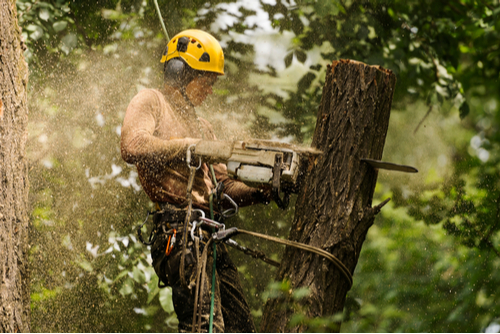How do you decide that Ottawa tree removal is the only cure for a dying tree on your property? After you have seen your tree grow from a fragile little plant to a huge strong tree, you may find it difficult deciding to remove it even if you notice that it’s dying. Besides the emotional attachment, it could be giving you fruits or maybe the spot you love to spend your evenings relaxing as you unwind.
Nevertheless, a dying tree, sadly, may need to be removed, or it may pose a danger to your family and your property. Also, if you want to sell your home, getting rid of such safety hazards is one way of increasing your Ottawa property value and chances of finding a buyer faster. But, how can you fully determine that your tree’s only option is removal?
Below are a few things to look out for in a dying Ottawa tree.
Fungal Growth Near the Base of the Tree
A fungal growth near the base of your tree is an indication that the tree has begun to decay. One sign of decaying you are likely to see is the growth of mushrooms—the fungus creates a good environment for mushrooms to flourish. When tree roots or trunks begin to decay, their structure is seriously compromised and, as such, needs quick removal. Unfortunately, there is no hope of reversing the situation, and if the tree is left, it may unexpectedly fall, causing serious damages.
Unhealthy Roots
It’s the tree’s roots that anchor it to the ground giving it strong support to continue growing upright. As such, any attack on the roots that causes them to weaken is an attack on the whole tree. One way to know if the roots of your tree are unhealthy is to check their color. Most roots have a deep brown color, and graying or flaking, could mean the roots are decaying, and you need to plan for its removal.
The Bark Has Fallen Off
A tree’s bark helps transport food from the leaves to the roots, water and minerals from roots to other parts of the tree. If your tree has lost most of its bark, it means little to no food is reaching the roots, and as such, the tree’s chances of dying are very high. To be on the safe side, you need to remove it before it suddenly collapses on your property.
A Sudden (Or Gradual) Lean
Sometimes trees assume odd growth patterns, and that does not necessarily mean they are dying. One common one is leaning from a vertical position which is usually caused by strong winds or root damage. However, when large trees lean from their vertical position at an angle that is more than 15 degrees, their chances of surviving are very low. Therefore, you need to quickly remove them as they will eventually die.
Storm Damaged Tree
Storms can cause serious damages to trees. If strong winds caused root failure, crown twist, stem failure, among other considerable damages, removing the tree may be the only option you have. With such damages, leaving the tree any longer is risking your property as its chances of healing are close to zero.
The signs of a sick tree are quite similar to those of a dying tree. If you are not sure whether your tree is in the process of dying or not, consult an arborist. Besides helping you identify dying trees on your property, an Ottawa arborist will help you remove them safely and smoothly.
Contact your Ottawa Tree King for more information.
If your looking to learn more about Ottawa Tree Services Check out this article: Ottawa Tree Service Tips

